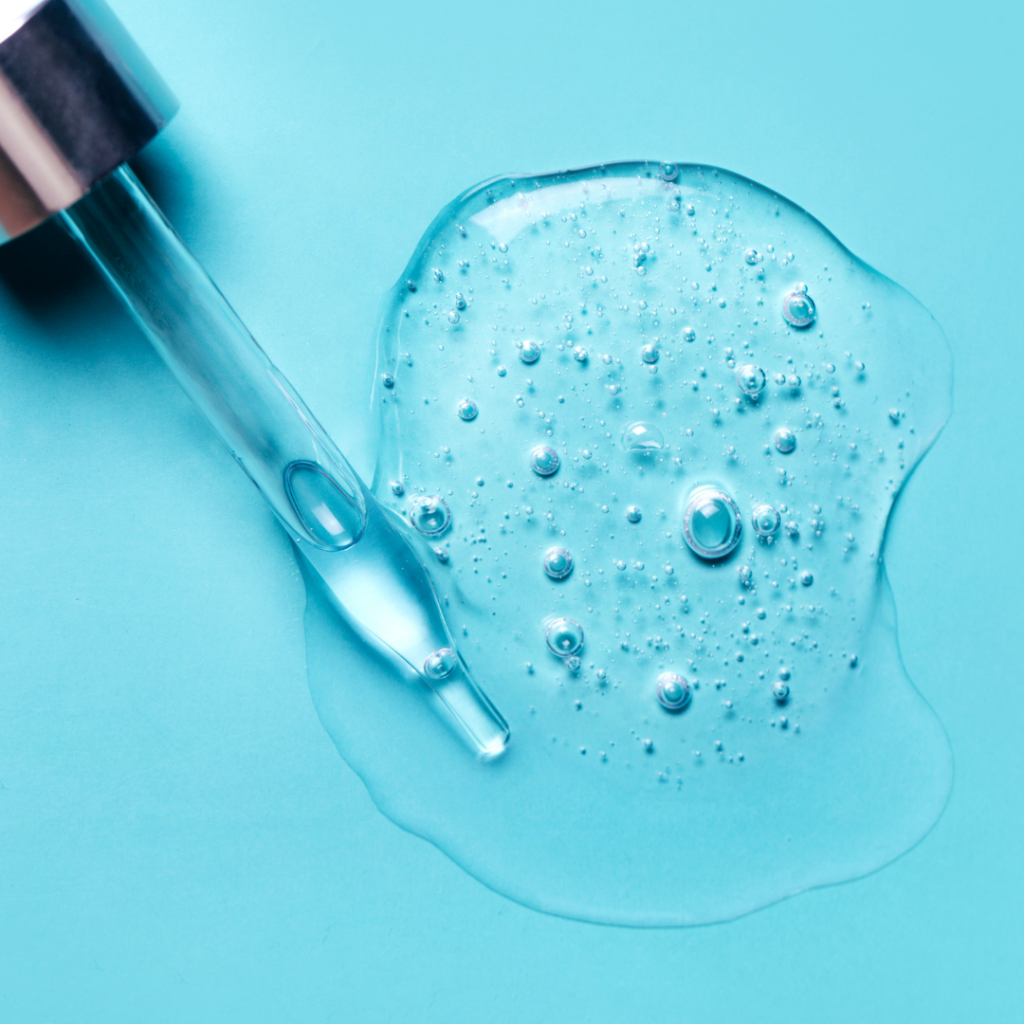The ABCs of Skincare: H is for Hyaluronic Acid
Welcome back to another installment of our ABCs of Skincare series! Sorry its been a while, but now we’re moving right along and we’ve reached the letter “H.” If you’re a skincare aficionado, you’ve probably heard of Hyaluronic Acid. It’s an ingredient that’s received quite the buzz in the skincare world, and for good reason. So, let’s dive deep into the hydrating world of Hyaluronic Acid!

What is Hyaluronic Acid?
Hyaluronic Acid (HA) is a sugar molecule naturally occurring in our skin and joints that has an extraordinary ability to bind water. Imagine it as nature’s sponge, capable of holding up to 1,000 times its weight in water. HA provides your skin with much-needed moisture, making it a star player in anti-aging, hydration, and skin rejuvenation. It also provides essential cushioning in our joints, keeps mucus membranes juicy, and is an important factor in keeping our skin barrier healthy.
Estrogen plays a major role in the production of HA. This is why when women approach menopause, they can start to feel quite dry: the lack of estrogen means less hyaluronic acid, which means dryness. Everywhere.
HA is acidic, but it shouldn’t be confused with other skin care acids, like lactic or glycolic. They are completely different. HA won’t exfoliate your skin, just plump it up.
Why is Hyaluronic Acid Important?
Intense Hydration
Living in a world increasingly filled with pollution and harmful UV rays, our skin is often left parched and thirsty. When the skin lacks hydration, it can lead to premature signs of aging and a lackluster complexion. Hyaluronic Acid offers that quenching drink your skin so desperately craves.
Versatility
Hyaluronic Acid isn’t picky; it’s beneficial for all skin types. Whether you have oily, acne-prone, or mature skin, HA is a universal crowd-pleaser. Plus, it’s vegan-friendly and completely acne-safe.
No Weird Side Effects
This is especially wonderful news for those of you who are cautious about what you put on your skin. HA is incredibly gentle, typically free from any synthetic additives, and rarely causes irritations.
How to Incorporate Hyaluronic Acid Into Your Skincare Routine
- Serums: A Hyaluronic Acid serum can be an effortless addition to your skincare routine. Apply it post-cleansing and pre-moisturizing for maximum benefits. It will work best if your skin is already damp; we recommend using a good hydrating mist after cleansing to get the best results. (Remember, HA acts like a sponge, give it some moisture to hold onto!)
- Hydrafacials: Remember our award-winning Hydrafacials? They include Hyaluronic Acid to leave your skin dewy and refreshed. Most professional facials will include multiple layers of HA.
- Creams and Lotions: Look for moisturizers that list Hyaluronic Acid among their ingredients. These will deliver lasting hydration throughout the day or night. Some of our favorites are here and here.
Eco-Conscious and Effective
For those who vote with their wallets and are committed to eco-friendly options, the Hyaluronic Acid we use is bioengineered in labs to be sustainable. You don’t have to compromise your ethical standards for beauty!
Book Your Appointment Today
Want to experience the hydration sensation that is Hyaluronic Acid? At Viriditas Beauty, our expert estheticians are ready to help you create a skincare routine that meets your individual needs. Plus, our treatments are designed with both efficacy and your well-being in mind. So why wait? Book your appointment today and hydrate your way to healthier, more youthful skin.
And that wraps up our “H” installment! Stay tuned for the next letter in our skincare alphabet series. Until then, keep glowing and growing! 💚
